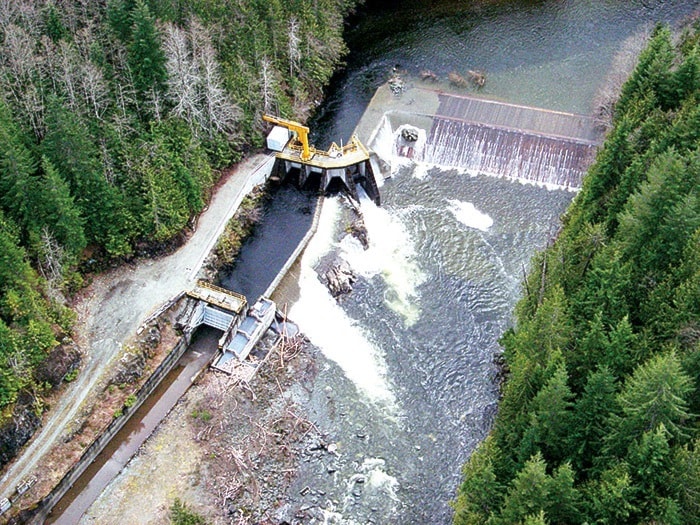Another year has passed, and fish advocate Mike Gage is dismayed that BC Hydro has yet to remedy a hotly debated diversion in the Salmon River.
The structure, a three-kilometre long concrete tunnel, was built in 1958 to divert water from the Salmon River to the Lower Campbell reservoir via Brewster Lake.
At the time, a downstream barrier prevented fish from making their way to the dam but that barrier was removed in the 1970s by the province and its removal resulted in fish stocks moving into the Salmon River.
The Campbell River Salmon Foundation has for years charged that the dam is a barrier to those migrating steelhead and salmon and it wants Hydro to build a fish passage around the diversion.
Gage, a director of the Campbell River Salmon Foundation, said the river is 82 kilometres long but 42 kilometres of river is inaccessible to all five species of salmon that use the Salmon River because they can’t make it past the concrete tunnel.
“There’s just hundreds of thousands of yards of gravel there,” Gage said. “It’s good habitat for the little guys. The Salmon River is probably up in the top three watersheds on the Island.”
Gage said he’s concerned with the lack of progress BC Hydro appears to be making in rectifying the situation.
“They announced they would build (a passageway) in 2015 but if they’re going to build in 2015 they should be engineering it right now and they’re not,” Gage said.
Stephen Watson, spokesperson for BC Hydro, said the utility has trimmed down its options to five conceptual capital projects, with multiple components each.
“They will achieve the goals of good fish passage and outmigration, along with increasing the service life of the Salmon River Diversion Dam. Some elements are interdependent – you do something to one part of the facility that can affect water flows in another part of the project,” Watson said. “The one element of the project that has a timeline goal, of November 2015, is the adult fish passage works and this is being co-managed with First Nations. That schedule remains, though we have conveyed to First Nations and agencies that date could be missed depending on what suite of options are ultimately selected. We will know that answer by the end of this year.”
In the meantime, Gage said based on a legal opinion obtained by the Campbell River Salmon Foundation, that BC Hydro is out of compliance with the federal Fisheries Act, section 20, which states that “Every obstruction across or in any stream where the Minister determines it to be necessary for the public interest that a fish-pass should exist shall be provided by the owner or occupier with a durable and efficient fish-way or canal around the obstruction.”
Watson, however, disputes that.
“Fish are getting upstream of the dam, though the current fish ladder and facility is not ideal,” Watson said.
But Gage said the Ministry of Environment has forecast that steelhead in the Salmon River could increase in numbers by 30 per cent if the additional 42 kilometres (27 kilometres in the upper river and 15 kilometres in Grilse Creek) were accessible to the fish.
“The reason I’m doing all of this is to make people in the community aware of all the fish stocks available in the Salmon River,” Gage said.
Watson agrees fish passage needs to be improved.
“BC Hydro has committed to the adult fish passage improvements and is working with First Nations and agencies on a good, long-term solution,” he said. “We will be going through a structured decision making process with First Nations and agencies this fall to select the best option for fish passage. We are heading in the right direction.”
The Salmon River diversion has recently undergone limited repairs and is able to divert up to 15 m3/s. The dam was taken out of service in June 2010 after it was discovered that some concrete panels in the canal need to be replaced or fixed.
